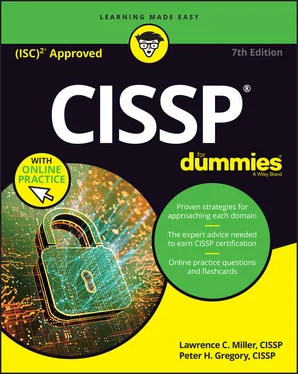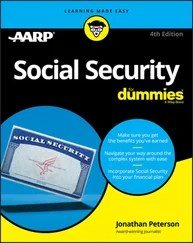As described by (ISC) 2, you need a scaled score of 700 (out of 1000) or better to pass the examination. All three question types are weighted equally, but not all questions are weighted equally. Harder questions are weighted more heavily than easier questions, so there’s no way to know how many correct answers are required for a passing score. But wait — it gets even better! On the adaptive exam, you no longer get a score when you complete the CISSP exam; you’ll get either a pass or fail result. Think of this situation as being like watching a basketball game with no scoreboard or a boxing match with no indication of who’s winning until the referee raises the victor’s arm.
All questions on the CISSP exam require you to select the best answer (or answers) from the choices presented. The correct answer isn’t always a straightforward, clear choice. (ISC) 2goes to great pains to ensure that you really, really know the material.
 A common, effective test-taking strategy for multiple-choice questions is to read each question carefully and eliminate any obviously wrong choices. The CISSP examination is no exception.
A common, effective test-taking strategy for multiple-choice questions is to read each question carefully and eliminate any obviously wrong choices. The CISSP examination is no exception.
 Wrong choices aren’t necessarily obvious on the CISSP examination. You may find a few obviously wrong choices, but they stand out only to someone who has studied thoroughly for the exam.
Wrong choices aren’t necessarily obvious on the CISSP examination. You may find a few obviously wrong choices, but they stand out only to someone who has studied thoroughly for the exam.
The Pearson VUE computer-adaptive, 3-hour, 100- to 150-question version of the CISSP examination is currently available only in English. If you prefer to take the CISSP exam in Chinese (simplified — the language, not the exam), French, German, Japanese, Korean, Portuguese, or Spanish because that’s your native language (or if you don’t speak the language but really want to challenge yourself), you’ll have to take a form-based, 6-hour, 250-question version of the CISSP exam — what many of us would refer to as the “old school” exam. You’re permitted to bring a foreign-language dictionary (nonelectronic and nontechnical) to the exam, if you need one. Also, testing options are available for the visually impaired. You need to indicate your preferences when you register for the exam.
In most cases, you’ll receive your unofficial test results at the testing center as soon as you complete your exam, followed by an official email from (ISC) 2.
 In some rare instances, your unofficial results may not be available immediately. (ISC) 2analyzes score data during each testing cycle; if there aren’t enough test results early in the testing cycle, your results could be delayed up to eight weeks.
In some rare instances, your unofficial results may not be available immediately. (ISC) 2analyzes score data during each testing cycle; if there aren’t enough test results early in the testing cycle, your results could be delayed up to eight weeks.
If, for some reason, you don’t pass the CISSP examination — say that you read only this chapter of CISSP For Dummies, for example — you’ll have to wait 30 days to try again. If that happens, we strongly recommend that you read the rest of this book during those 30 days! If you fail a second time, you’ll have to wait 90 days to try again. If that happens, we most strongly recommend and highly urge you to read the rest of this book — perhaps a few times — during those 90 days! Finally, if you fail on your third attempt, you’ll have to wait 180 days. You’ll have no more excuses; you’ll definitely need to read, reread, memorize, comprehend, recite, ingest, and regurgitate this book several times!
After earning your CISSP certification, you must remain an (ISC) 2member in good standing and renew your certification every three years. You can renew the CISSP certification by accumulating 120 Continuing Professional Education (CPE) credits or by retaking the CISSP examination. You must earn a minimum of 40 CPE credits during each year of your 3-year recertification cycle. You earn CPE credits for various activities, including taking educational courses or attending seminars and security conferences, belonging to association chapters and attending meetings, viewing vendor presentations, completing university or college courses, providing security training, publishing security articles or books, serving on relevant industry boards, taking part in self-study, and doing related volunteer work. You must document your annual CPE activities on the secure (ISC) 2website to receive proper credit. You’re also required to pay a $125 (U.S.) annual maintenance fee to (ISC) 2. Maintenance fees are billed in arrears for the preceding year, and you can pay them in the secure members’ area of the (ISC) 2website.
 Be sure to be truthful on your CPE reporting, and retain evidence of your training. (ISC) 2audits some CPE submissions.
Be sure to be truthful on your CPE reporting, and retain evidence of your training. (ISC) 2audits some CPE submissions.
 As soon as you receive your certification, register on the (ISC) 2website, and provide your contact information. (ISC) 2reminds you of your annual maintenance fee, board of directors elections, annual meetings, training opportunities, and events, but only if you maintain your contact info — particularly your email address.
As soon as you receive your certification, register on the (ISC) 2website, and provide your contact information. (ISC) 2reminds you of your annual maintenance fee, board of directors elections, annual meetings, training opportunities, and events, but only if you maintain your contact info — particularly your email address.
Chapter 2
Putting Your Certification to Good Use
IN THIS CHAPTER
 Staying active as an (ISC)2 member
Staying active as an (ISC)2 member
 Discovering the joy of giving back
Discovering the joy of giving back
 Working with others in your local security community
Working with others in your local security community
 Getting the word out about CISSP certification
Getting the word out about CISSP certification
 Bringing about change in your organization
Bringing about change in your organization
 Advancing your career with other certifications
Advancing your career with other certifications
 Finding a mentor and being a mentor
Finding a mentor and being a mentor
 Achieving security excellence
Achieving security excellence
Although this book is devoted to helping you earn your CISSP certification, we thought it would be a good idea to include a few things you might consider doing after you’ve earned your CISSP. If you’re still exploring the CISSP certification, the information in this chapter will help you better understand many of the benefits of being a CISSP, including your role in helping others.
So what do you do after you earn your CISSP? You can do plenty of things to enhance your professional career and the global community. Here are just a few ideas!
Читать дальше

 A common, effective test-taking strategy for multiple-choice questions is to read each question carefully and eliminate any obviously wrong choices. The CISSP examination is no exception.
A common, effective test-taking strategy for multiple-choice questions is to read each question carefully and eliminate any obviously wrong choices. The CISSP examination is no exception. Wrong choices aren’t necessarily obvious on the CISSP examination. You may find a few obviously wrong choices, but they stand out only to someone who has studied thoroughly for the exam.
Wrong choices aren’t necessarily obvious on the CISSP examination. You may find a few obviously wrong choices, but they stand out only to someone who has studied thoroughly for the exam. Staying active as an (ISC)2 member
Staying active as an (ISC)2 member










